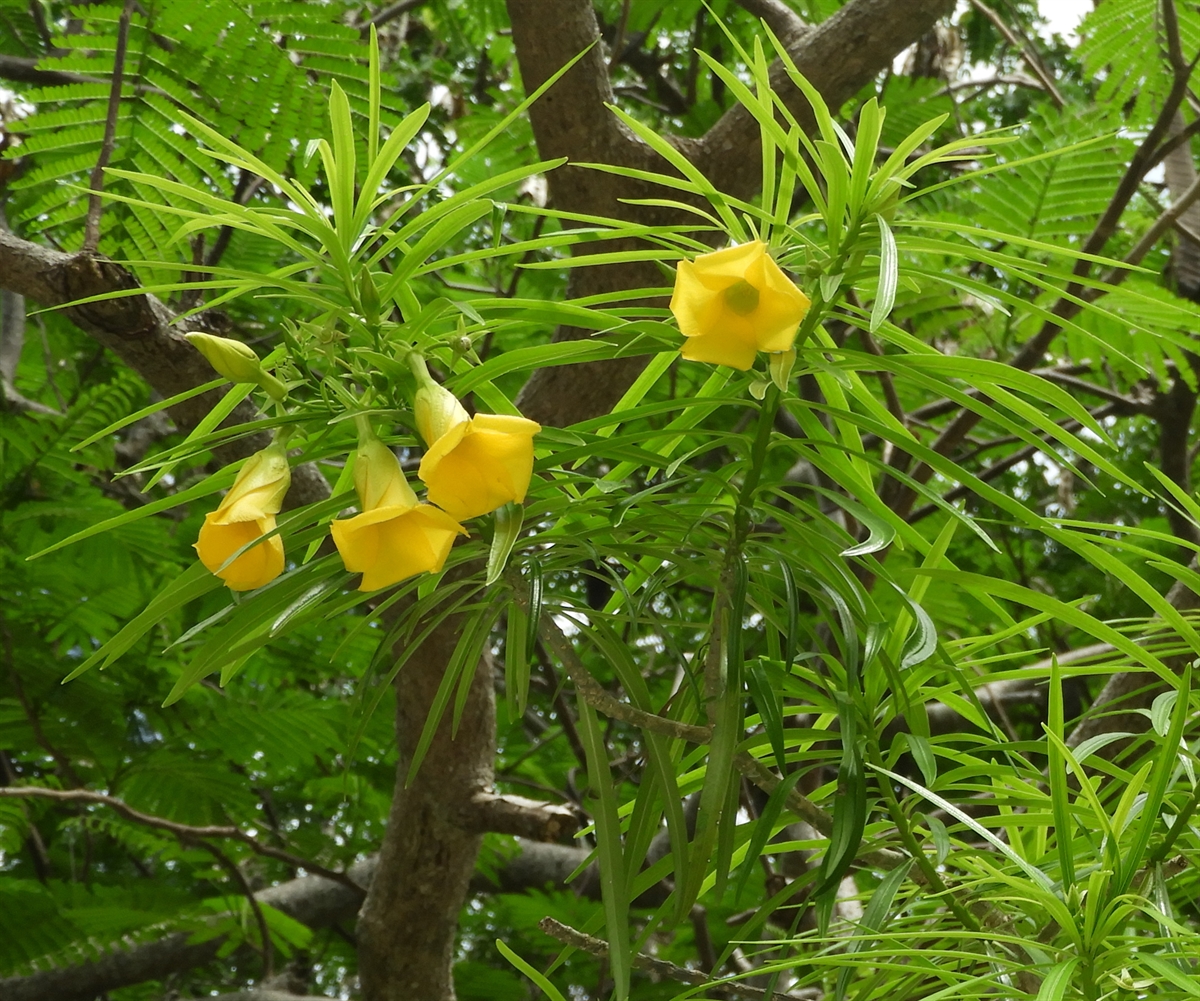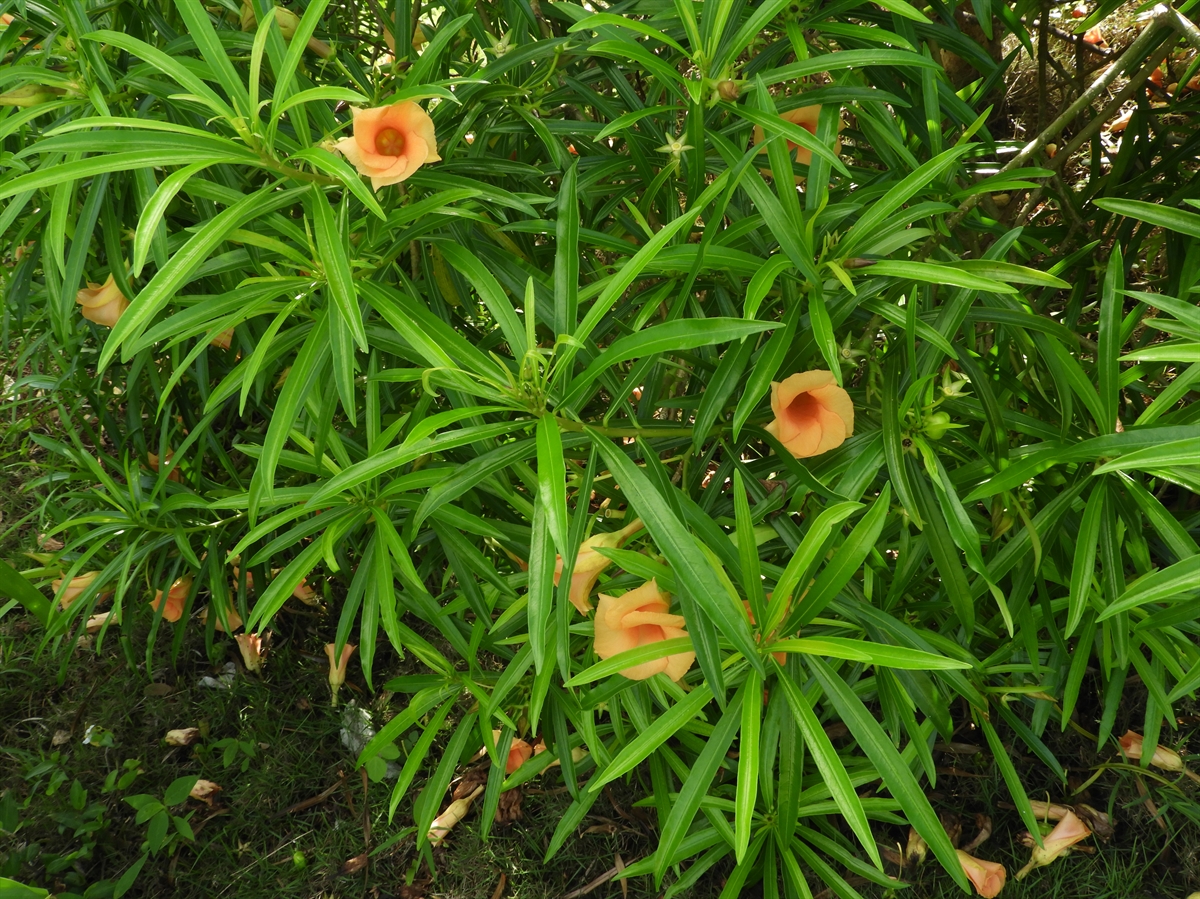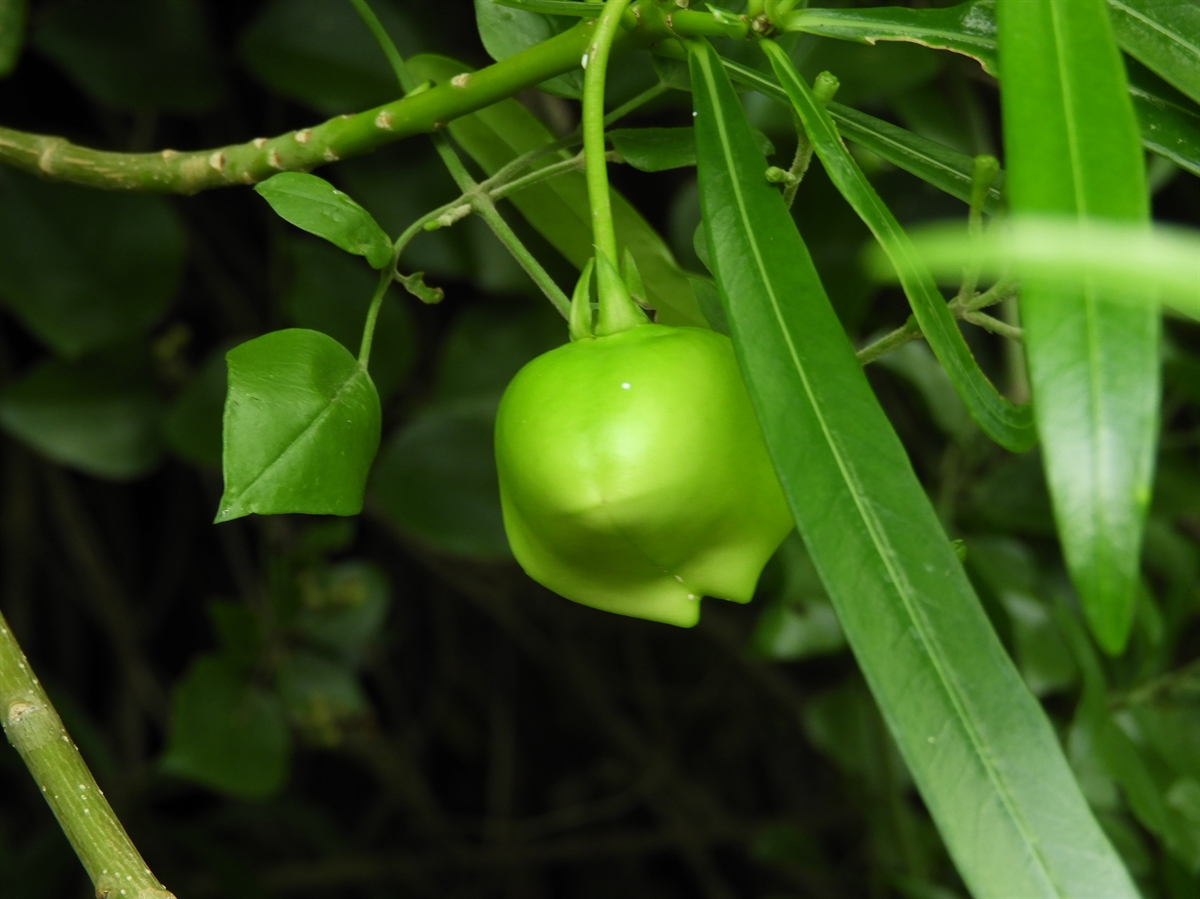Habit: Cascabela thevetia grows as glabrous shrub up to 6 m in height. The leaves are arranged oppositely, linear to lanceolate, up to 15 cm long, 2 cm wide, with an entire leaf margin, acuminate apex.
The complete, perfect, actinomorphic flowers are arranged in corymbs in leaf axils. The calyx has 5 unfused, green sepals. The corolla has 5 yellow or orange petals that are fused forming a interiorly pubescent tube with the lobes overlapping to one side forming a pinwheel shape. There are 5 stamens fused to the corolla tube. The ovary is superior and has two locules and many ovules. The fruit is a round drupe that turns red at maturity. The seeds have tufts of hairs at one end to assist in dispersal.
Habitat: Cascabela thevetia grows in Human Altered environments (yards and roadsides).
Distribution: Cascabela thevetia is NOT native to the Lucayan Archipelago. It is native to Central and South America but has spread through the Caribbean Region, Central Africa, Asia and the Indian subcontinent.
Medicinal/Cultural/Economic usage: Cascabela thevetia is not known to be used medicinally in the Lucayan Archipelago.
It is used as an ornamental.
Cascabela thevetia is EXTREMELY toxic in all parts.


